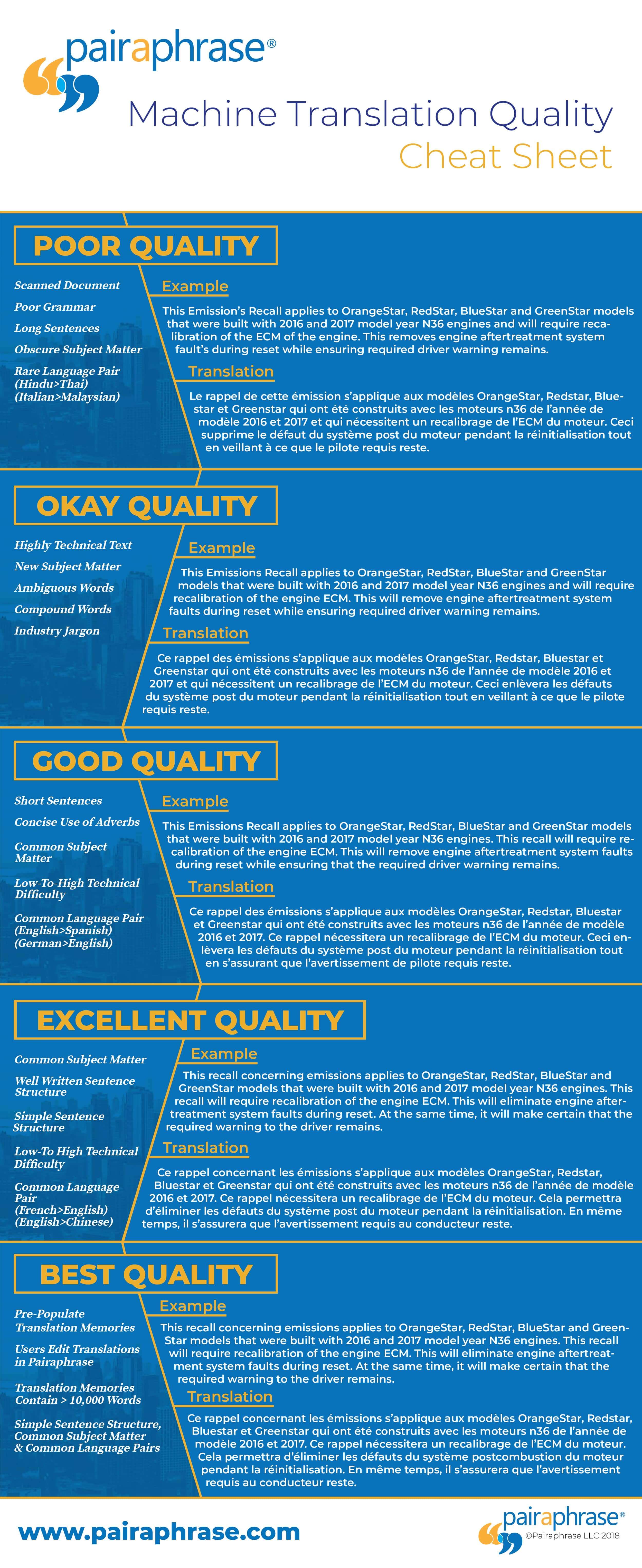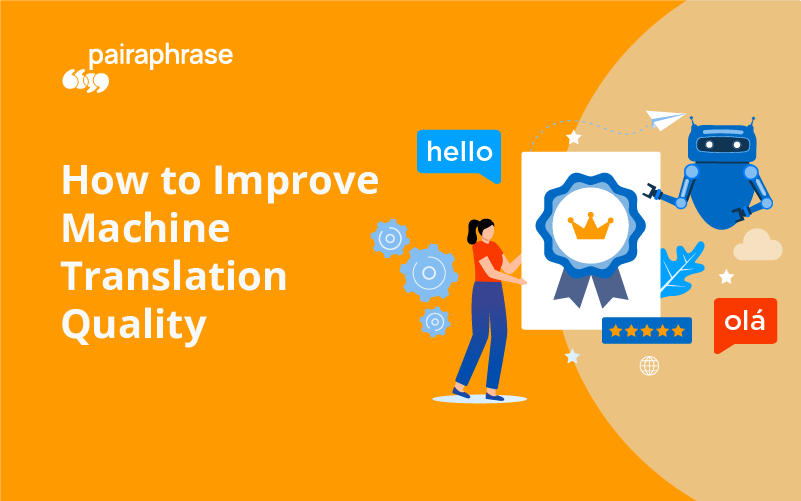Wondering how to improve machine translation quality? That comes as no surprise! Using machine translation in an attempt to achieve highly accurate translations will leave you disappointed if you expect to achieve the same output as you would from human translation.
First off, it’s important to acknowledge that your machine translation tool won’t magically improve its linguistics unless you help it.
This is because in 2024, the improvement of machine translation output depends on human involvement from the user by editing translations and training your machine translation engine. Thankfully, we’re at a point in history where artificial intelligence and machine learning come together to make this easier than ever.
So if you want to know how to improve machine translation quality, there are two ways to do so. You must either change the way you write your input text and/or you must switch to a translation solution that incorporates the technology mentioned above.
Below, we’ll go into more detail about these two methods for how to improve machine translation quality. This will help you to get better translations from a professional translation application.
Two Methods for Improving Machine Translation Quality
Below, you’ll learn how to improve machine translation quality so that you get more accurate translation output that is linguistically correct.
1. Change the Way You Write
One approach for how to improve machine translation quality in a way that is in your control is to change the way you write your input text.*
This means that any file or chunk of text you’re translating should be written with a few things in mind in order to not “confuse” your machine translation tool. You should write the source text in a certain way so that your output text actually makes sense in the target language.
With machine translation users like you in mind, we created an infographic about how to get high-quality machine translation results by changing the way you write. You’ll find the full infographic in this post. But first, we pulled some writing tips from that image and listed them below.
Be sure to take a look at the whole infographic because it contains other tips for how to improve the quality of your translation projects. You can share it or print it out to keep as a cheat sheet on your desk while you write.
How to Improve Machine Translation Quality by Changing the Way You Write
- Use short sentences
- Make sure your sentence structure is well-written
- Aim for simple sentence structure
- Use adverbs concisely
- Avoid industry jargon
- Stay away from slang
- Avoid compound words
- Don’t use ambiguous words

*We acknowledge the style of writing in the source file is out of your control if you aren’t the person who created the file. For example, if you work with a large company that sends you their files for translation, there might not be much you can do to change their writing other than to educate them. In this case, feel free to share the above infographic with them and let them know that following this guide can save them even more time and money on their translations.
Now that you know how to improve machine translation quality via writing, we are going to tell you how to improve machine translation quality by training your machine translation engine.
2. Train Your Machine Translation Engine to Improve Translation Quality
Another tip for how to improve machine translation quality is to train your machine translation engine. This means adopting translation software that incorporates Translation Memory, Dynamic Machine Learning and Terminology Management. This will get you as close to human-quality machine translation as possible.
Translation Memory is a core component of any learning translation tool. It’s been around for more than 30 years and is the translation industry’s way of reusing previous translations to improve the quality of a user’s translations over time. This is how to improve machine translation in the most cost-effective way.
Build a Translation Memory
There are two ways to train your machine translation engine. You can take all your old legacy documents and files and their translated counterparts and create Translation Memories. This will dramatically improve the initial translation quality but requires some significant work upfront to find and organize files.
Post-Edit Machine-Translated Text
You can also edit documents and teach the translation engine to learn your organization’s words and phrases in real time, as you edit. To do this, use machine learning. Machine learning usually happens in the background as you edit document and file translations.
How This Yields High Quality Machine Translation
Translation memory boosts the user’s productivity by working in conjunction with Dynamic Machine Learning to auto-populate future translations based on previously translated content.
Essentially, once you have software with machine translation and translation memory, you can upload files and the software will give you a draft translation. Any previous translation memories you have created in your account will apply, but the draft will be predominantly machine-translated text. Then, the software will allow you to edit the draft’s text by segment, within software platform.**
Each edit you save will be stored in your Translation Memory, within your account. Simultaneously, that edit will automatically be applied to any repetition of the segment you edited that exists within the document. If that file is part of a batch of files you uploaded together, the edit will be applied within that file and across all the files within that batch. This is called Dynamic Machine Learning.
You don’t need to manually edit the same word or phrase repetitively--and this saves you time and money!
Continuous Machine Translation Improvements
The more Translation Memories you create over time, the better your translation quality becomes and the less input you need to give. Eventually, little involvement will be required of you as the user, as you’ll have adequately trained your machine translation engine.
Watch the 3-minute video below on how to improve machine translation quality using Dynamic Machine Learning in combination with Translation Memory.
**Don’t ignore the fact that the person making the edits in the software needs to be bilingual in the source and target languages!
Improve Machine Translation Quality Today
Now that you know how to improve machine translation quality, are you ready to get started?
Pairaphrase is the easiest, safest and smartest translation software you can use. It includes Translation Memory and Dynamic Machine Learning to help you achieve a high level of translation quality while letting the machine do much of the work.

Get Started
or share this article with a colleague.


.png)

.png)




